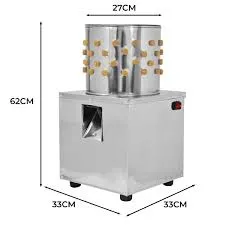Design Considerations for Modern Poultry Farming Infrastructure and Best Practices
Oct . 14, 2024 23:44 Back to list
Design Considerations for Modern Poultry Farming Infrastructure and Best Practices
The Modern Evolution of Commercial Poultry Houses
In recent years, the poultry industry has undergone significant transformations, largely driven by advancements in technology, increasing demand for sustainable practices, and a growing understanding of animal welfare. At the heart of this revolution are commercial poultry houses, which serve as the primary habitats for billions of chickens, ducks, and turkeys worldwide. These structures not only facilitate the efficient production of meat and eggs but also play a critical role in shaping the future of poultry farming.
Efficiency and Design
The design of commercial poultry houses has evolved to optimize space, minimize labor, and enhance production efficiency. Modern houses often utilize a controlled environment system that regulates temperature, humidity, and air quality, ensuring optimal living conditions for the birds. This is particularly important in regions where extreme weather conditions can adversely affect poultry health and productivity.
Furthermore, innovative building materials and techniques have been adopted to improve energy efficiency and reduce operational costs. Insulated panels, natural ventilation systems, and solar energy integration are just a few examples of how poultry houses are becoming more sustainable. These advancements not only help in reducing the carbon footprint of poultry farming but also lower the overall cost of production.
Animal Welfare Considerations
As consumers become more conscious of animal welfare, poultry housing designs have started to adapt to these evolving expectations
. Many commercial poultry houses are being constructed with animal-friendly features that allow chickens more space to move freely, engage in natural behaviors, and reduce stress levels. Enriched environments, complete with perches, nesting boxes, and outdoor access, are becoming more common, reflecting a shift towards more humane farming practices.The welfare of poultry is not just a moral consideration; it also has direct implications for production efficiency. Healthier, less stressed birds are more productive, laying more eggs and growing faster than their counterparts kept in inadequate conditions. As a result, investing in quality housing can yield significant economic benefits for producers.
commercial poultry houses

Biosecurity Measures
With the threat of avian diseases such as avian influenza and Newcastle disease, biosecurity has become a top priority for commercial poultry houses. Effective biosecurity measures are crucial to prevent disease outbreaks that can devastate flocks and lead to economic loss. Modern poultry houses are often equipped with advanced biosecurity features, including controlled access points, foot baths, and air filtration systems to minimize the risk of pathogen transmission.
Furthermore, regular health monitoring and the use of vaccination protocols are becoming industry standards. By integrating biosecurity practices into housing design and management, poultry producers can safeguard their investments while ensuring the health and welfare of their birds.
Economic Impact
The commercial poultry industry significantly contributes to the global economy. It provides employment opportunities for millions and is a vital source of protein for many populations. The evolution of poultry houses has played a crucial role in this economic impact. By increasing production efficiency, enhancing animal welfare, and implementing biosecurity measures, poultry houses enable producers to meet the rising global demand for poultry products.
Moreover, advancements in technology, such as automation for feeding, watering, and environmental control, have allowed farmers to operate more efficiently with fewer resources. This not only leads to increased productivity but also helps in reducing waste, thereby contributing to more sustainable farming practices.
Conclusion
As the poultry industry continues to evolve, commercial poultry houses will remain at the forefront of this transformation. With an increasing emphasis on efficiency, animal welfare, and sustainability, the future looks promising for poultry farming. By embracing innovative designs and practices, the industry can better meet the demands of both consumers and the environment while ensuring the health and well-being of poultry. This ongoing evolution is not just beneficial for the farmers but also reflects a responsible approach to food production that aligns with modern societal values.
-
Automatic Feeding Line System-Pan Feeder Nipple Drinker|Anping County Yize Metal Products Co., Ltd.
NewsJul.29,2025
-
Hot Sale 24 & 18 Door Rabbit Cages - Premium Breeding Solutions
NewsJul.25,2025
-
Automatic Feeding Line System Pan Feeder Nipple Drinker - Anping County Yize Metal Products Co., Ltd.
NewsJul.21,2025
-
Automatic Feeding Line System Pan Feeder Nipple Drinker - Anping County Yize Metal Products Co., Ltd.
NewsJul.21,2025
-
Automatic Feeding Line System - Anping Yize | Precision & Nipple
NewsJul.21,2025
-
Automatic Feeding Line System - Anping Yize | Precision & Nipple
NewsJul.21,2025






